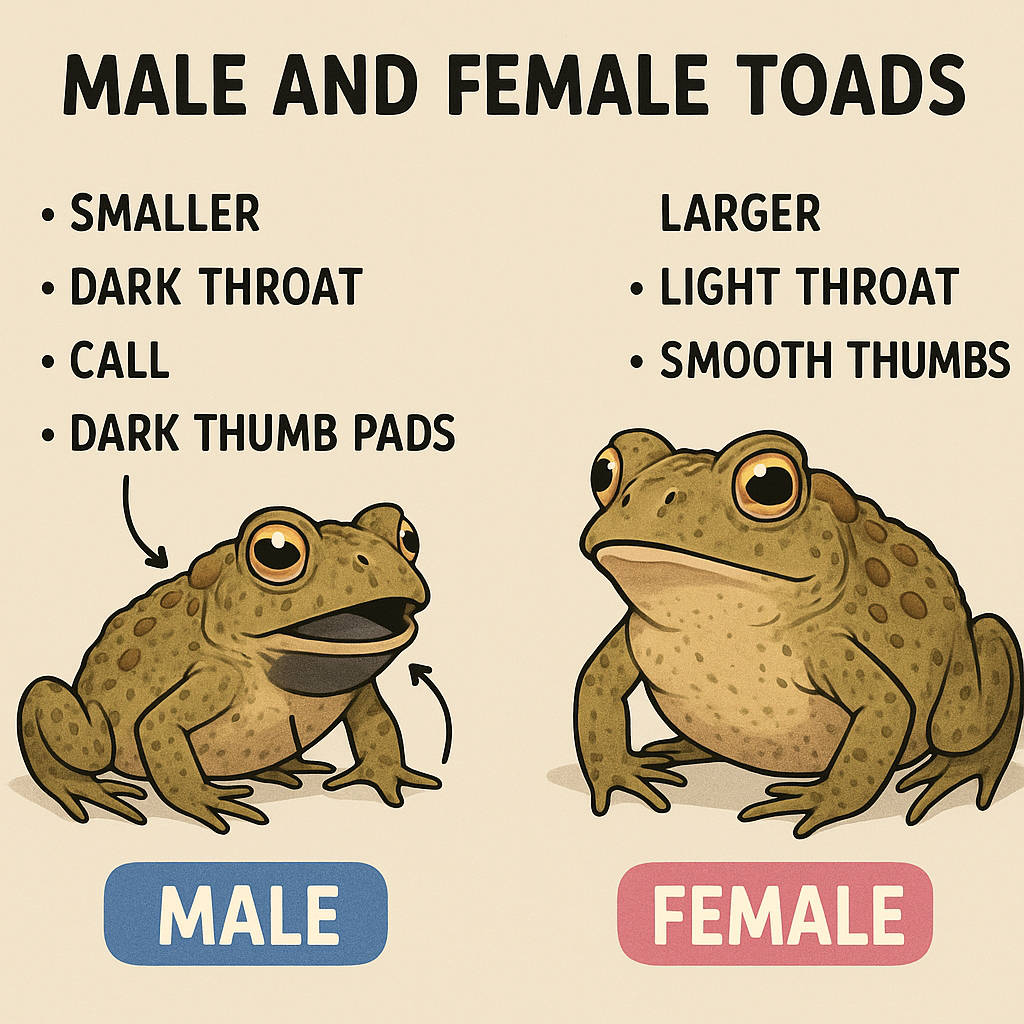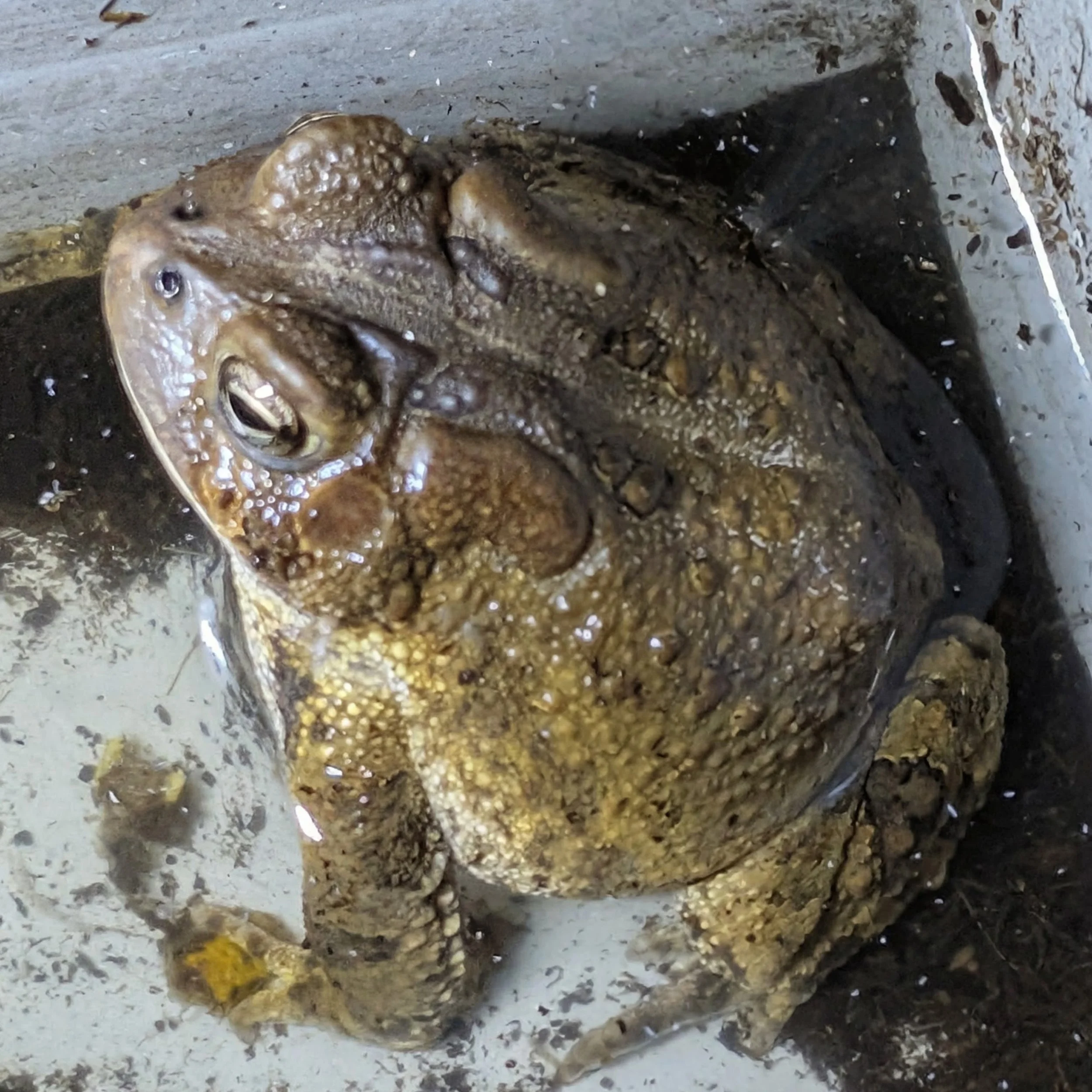American Toads
(Anaxyrus americanus)
A common, hardy, and beloved amphibian across much of North America
🟤 What They Look Like
Usually brown, tan, or gray, sometimes reddish.
Covered with dry, warty skin (the “warts” are parotoid glands that produce mild toxins for protection).
One or two large warts inside each dark spot on the back — this helps tell them apart from other toads.
Short legs for walking or small hops rather than long leaps.
Males often have darker throats during breeding season.
🌎 Where They Live
American toads have one of the widest ranges of any North American amphibian.
They are found throughout:
The Midwest (including Iowa)
The Eastern U.S.
Parts of Canada
They thrive in:
Backyards
Forest edges
Meadows
Gardens
Any area close to water for breeding
They’re extremely adaptable — one reason people see them so often.
🎵 Sounds and Communication
Male American toads have a very distinctive call:
A long, musical trilling sound, lasting 5–30 seconds
Often heard in spring and early summer
Their call is one of the first reliable sounds of spring in many areas.
🐸 Life Cycle
Eggs – females lay thousands in long, jelly-like strings in shallow water.
Tadpoles – tiny black tadpoles gather in schools and grow quickly.
Metamorphosis – they turn into toadlets in just a few weeks.
Adults – live on land most of the year, returning to water only to breed.
American toads may live several years in the wild and even over 10 years in captivity.
🌙 Daily Life & Behavior
Mostly nocturnal.
During the day they hide under logs, rocks, leaf litter, or in burrows.
They are solitary and very territorial with other toads outside breeding season.
They use their sticky tongues to catch insects.
🍽 What They Eat
American toads are great natural pest control!
Their diet includes:
Ants
Beetles
Slugs
Worms
Spiders
Small insects
A single toad can eat thousands of insects each season.
🛡 Defense & Predators
Their main defenses:
Glands that release mild toxins (not harmful to humans or pets who don’t mouth them)
Puffing up to look bigger
Camouflage
Predators include:
Snakes
Birds
Raccoons
Larger frogs
❄️ Winter: How They Survive
American toads hibernate on land:
They dig deep burrows below the frost line
Sometimes use abandoned rodent tunnels
They slow their metabolism and survive months without eating
In spring they re-emerge as soon as temperatures warm.
💡 Fun Facts
They return to the same breeding pond every year.
Their skin toxin tastes bitter to predators and can cause drooling—but won’t harm humans.
They can “play dead” if threatened.
Despite their reputation, toads do NOT give people warts — that’s a myth from human papillomavirus (HPV)!




